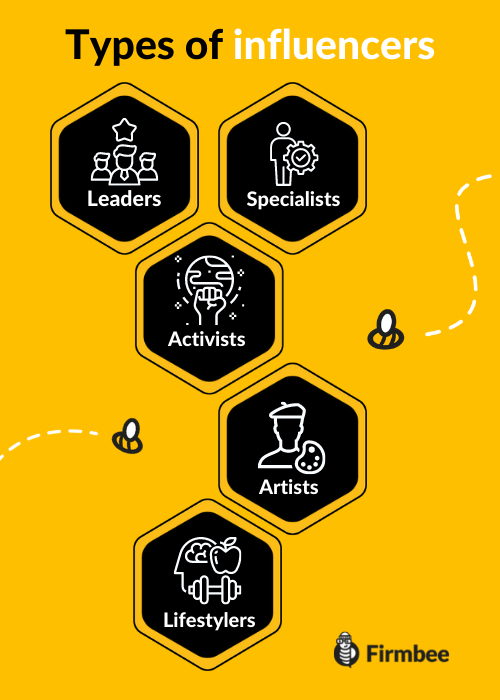How to find an influencer to suit your needs and how to check their credibility?? Which one will be the best for your campaign? The effectiveness of an influencer marketing campaign depends on the right choice. It is not only about the profile of his or her activity, but also about the issues of credibility, reliability, the level of audience involvement, its segmentation and geographical range. It is also hard not to mention financial issues and existing contractual restrictions. So although influencer marketing may seem simple and easy on the surface, the appearance of the results of cooperation in the public space is just the tip of the iceberg. As a matter of fact, it is the result of long in-depth research, analysis, negotiations and design processes. Eager to find the answer for the main question? Take a look at our report.
How to find the right influencer – table of contents:
- Types of influencers
- How to find an influencer?
- How to test an influencer?
- FAQ. Question and answers
Types of influencers
To start with, there are some distinctions to be made to better understand the specifics of this form of promotion. They vary in plenty of ways.They have different audiences; they also differ in terms of the type of content they present. The first of these categorizations, by the number of followers, allows you to distinguish three groups of influencers:

- micro-influencers – from 1,000 to 100,000
- macro-influencers – 100,000 to 1,000,000
- mega-influencers – with a reach exceeding 1,000,000 followers
In the publication written by Patrycja Górecka-Butory, we can find information that the most frequent cooperation is with micro-influencers (over 46%) and those with medium reach because the “bigger” ones in terms of numbers are limited by long-term contracts with larger players, involved exclusivity in the promotion of specific product categories.
However, numbers shouldn’t be the only factor that determines cooperation with a given person. If you want to promote your product, find an influencer whose activity profile or characteristics are to some extent consistent with you. From this perspective, it is crucial to make another categorization of influencers, by their scope, into:
- leaders – people with a lot of charisma who attract crowds with their personality,
- specialists – those with significant knowledge in a particular field,
- activists – socially, environmentally, politically or economically engaged,
- artists – whose professional activity is connected with art or who have a highly developed aesthetic sense, made visible in the form of the proposed content,
- lifestylers – creating content related to everyday life, fashion, beauty, travel, etc.
How to find an influencer?
If you want to find an influencer, there are a couple of equally apt solutions available to you. The first is influencer databases, offered by many entities that broker this type of deal.
You can also rely on available tools such as InfluTool, SocialBakers, Upfluence.com, hypeauditor.com, freeskout.com, Sprout Social or iconosquare and choose an influencer tailored to your needs. They allow you to search for influencers that fall into your desired categories, as long as you have basic data analysis skills.
Another attractive (and free) option is Facebook groups for entrepreneurs and influencers. The savings made in this case, however, are realized at the expense of time-consuming and lack of professional verification of a given influencer.
Finally, when looking to find an influencer, you can use the professional contacts available or use consultants.

How to test an influencer?
Influencer marketing has a tricky flaw that sometimes impressive numbers associated with certain accounts do not translate into the real value of cooperation. The reach (which is sometimes artificially boosted) does not show the real impact – it is the engagement that measures the influencer’s position. Therefore, before you decide to sign a contract, check out the influencer.
You can do this on your own by analyzing the data available on the influencer’s channels, the aggregate results of their activity, those linked to campaigns similar to yours or o posts with similar themes.
Tools available on the market such as Google Analytics will help you analyze the available data, which will allow you to track website traffic, its sources, user behavior, rejection rate, demographics, and much, much more.
To choose an influencer, one needs to check the following
- numbers referring to the followers of a profile against those showing their engagement (number of reactions, comments, shares),
- number of unique users (many impressions may come from only one person),
- regularity of entries,
- quality entries,
- sentiment made visible in the form of reactions and comments,
- communication channels used.
Read also: Event marketing – 9 benefits it can bring to your business
If you like our content, join our Facebook community!
Author: Piotr Pawłowski
Product Owner with over 15 years of experience in broadly understood Internet marketing. Without the slightest problem he can manage a project and everything is in one place. Passionate about growth hacking, his areas of interest include project management, business development and content marketing. He is also an avid HR enthusiast.
The most important questions
-
How to find an influencer for your campaign?
You can do this by using influencer databases; Facebook groups; using tools such as InfluTool, SocialBakers, Upfluence.com, hypeauditor.com, freeskout.com, Sprout Social or iconosquare or by taking advice from people experienced in the field.
-
How to test an influencer?
For influencer marketing to bring you the expected benefits, you should verify that it has a real impact on your audience. Data such as engagement rate (eg), quality of content delivered, regularity of posts, demographics, communication channels, etc. will be helpful in this regard .


















